
How to Conduct a Stay Interview
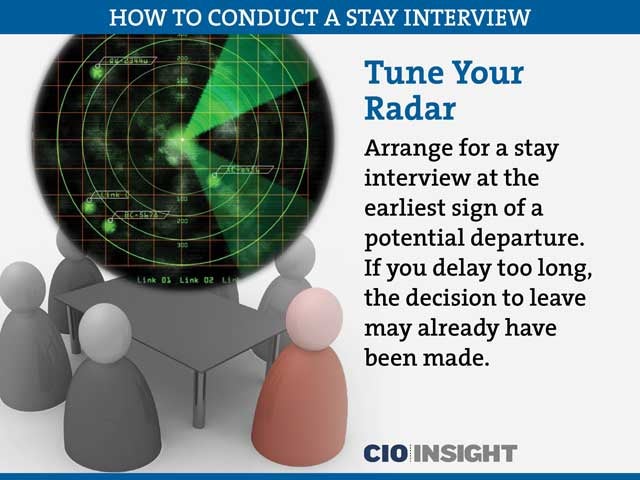 Tune Your Radar
Tune Your Radar
Arrange for a stay interview at the earliest sign of a potential departure. If you delay too long, the decision to leave may already have been made.
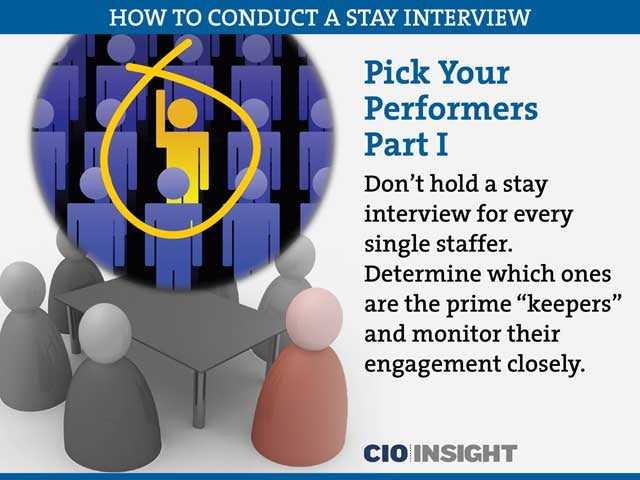 Pick Your Performers, Part I
Pick Your Performers, Part I
Don’t hold a stay interview for every single staffer. Determine which ones are the prime “keepers” and monitor their engagement closely.
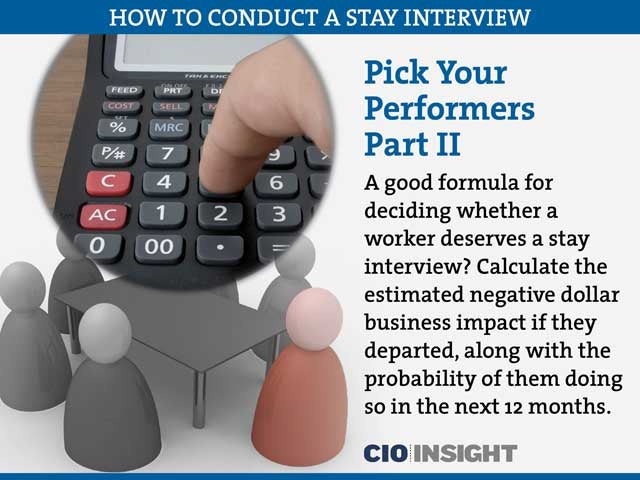 Pick Your Performers, Part II
Pick Your Performers, Part II
A good formula for deciding whether a worker deserves a stay interview? Calculate the estimated negative dollar business impact if they departed, along with the probability of them doing so in the next 12 months.
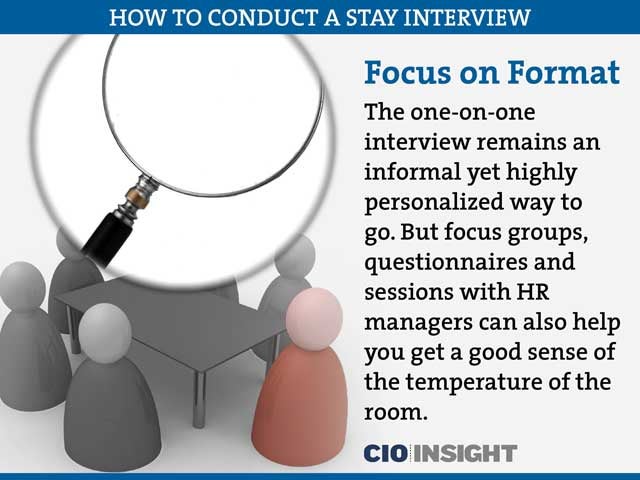 Focus on Format
Focus on Format
The one-on-one interview remains an informal yet highly personalized way to go. But focus groups, questionnaires and sessions with HR managers can also help you get a good sense of the temperature of the room.
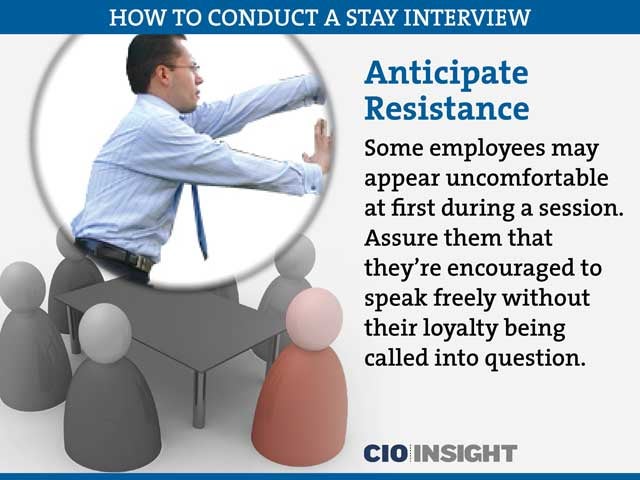 Anticipate Resistance
Anticipate Resistance
Some employees may appear uncomfortable at first during a session. Assure them that they’re encouraged to speak freely without their loyalty being called into question.
 Send Positive Karma
Send Positive Karma
While the worker will likely bring up some gripes, including some which might involve you, you must genuinely welcome such input while also sending the message that the employee is highly valued.
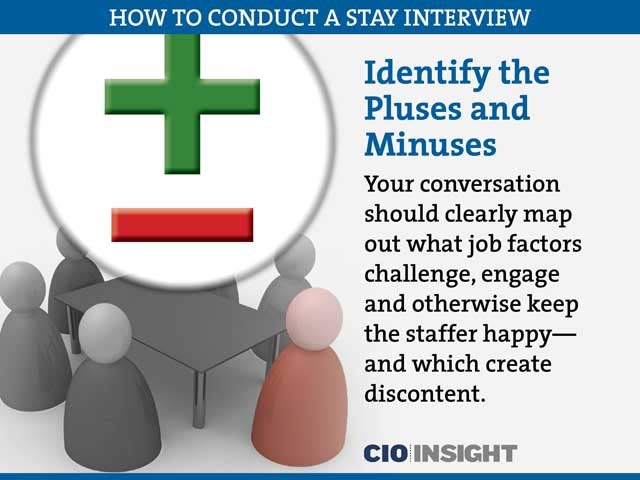 Identify the Pluses and Minuses
Identify the Pluses and Minuses
Your conversation should clearly map out what job factors challenge, engage and otherwise keep the staffer happy—and which create discontent.
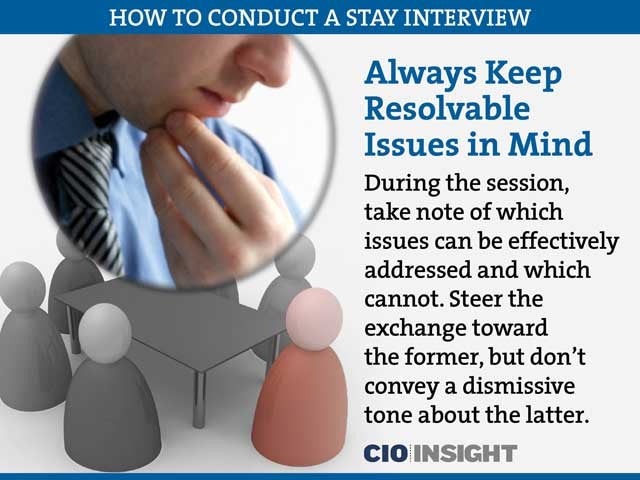 Always Keep Resolvable Issues in Mind
Always Keep Resolvable Issues in Mind
During the session, take note of which issues can be effectively addressed and which cannot. Steer the exchange toward the former, but don’t convey a dismissive tone about the latter.
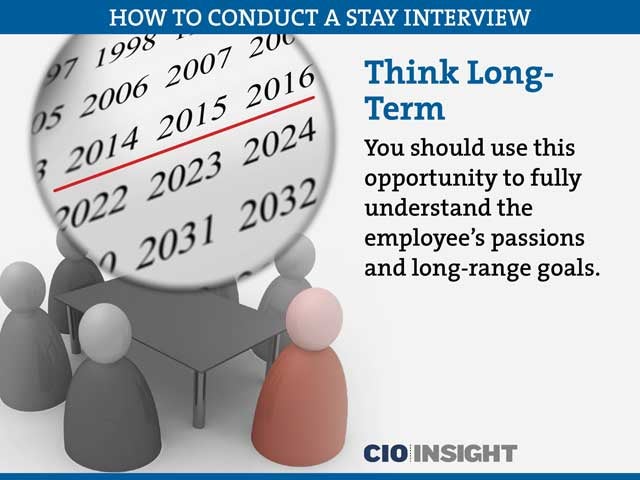 Think Long-Term
Think Long-Term
You should use this opportunity to fully understand the employee’s passions and long-range goals.
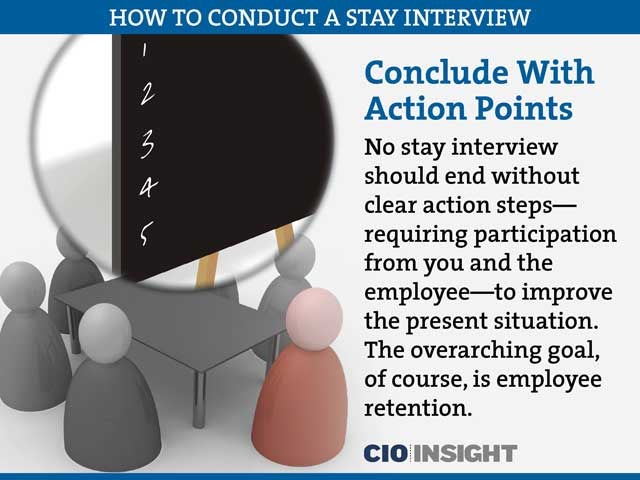 Conclude With Action Points
Conclude With Action Points
No stay interview should end without clear action steps—requiring participation from you and the employee—to improve the present situation. The overarching goal, of course, is employee retention.